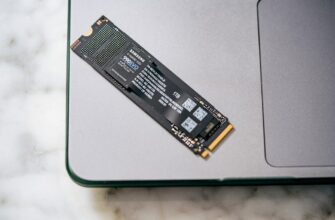- Understanding Bitcoin’s Built-In Scarcity Engine
- What Exactly is Bitcoin Halving?
- Complete Bitcoin Halving History Timeline
- Economic Impact of Halving Events
- Next Halving: 2024 Predictions and Expectations
- Bitcoin Halving FAQs
- How often do Bitcoin halvings occur?
- Why does Bitcoin need halving events?
- Do halvings cause immediate price spikes?
- What happens to miners after halving?
- When will Bitcoin halvings end?
- Can halving events be changed?
Understanding Bitcoin’s Built-In Scarcity Engine
Bitcoin halving is a pre-programmed event in Bitcoin’s blockchain protocol that slashes mining rewards by 50% approximately every four years. This deflationary mechanism, designed by Satoshi Nakamoto, ensures Bitcoin’s total supply caps at 21 million coins. By methodically reducing new coin issuance, halvings create artificial scarcity – mimicking precious metals like gold while combating inflation. Historically, these events have triggered major market cycles, making halving history essential for crypto investors.
What Exactly is Bitcoin Halving?
Bitcoin halving occurs every 210,000 blocks – roughly every four years – and is hardcoded into Bitcoin’s DNA. Miners who validate transactions and secure the network receive reduced rewards for their efforts. This serves two critical purposes:
- Controlled Supply: Gradually slows new Bitcoin creation until the final coin is mined around 2140
- Value Preservation: Creates scarcity to counter inflationary devaluation seen in fiat currencies
The process continues until block rewards reach zero, shifting miner compensation entirely to transaction fees.
Complete Bitcoin Halving History Timeline
Three halvings have occurred since Bitcoin’s 2009 launch, each reshaping its economic landscape:
- First Halving (November 28, 2012)
- Block Height: 210,000
- Reward Change: 50 BTC → 25 BTC
- Price 1 Year Later: $800 (from $12 pre-halving)
- Second Halving (July 9, 2016)
- Block Height: 420,000
- Reward Change: 25 BTC → 12.5 BTC
- Price 1 Year Later: $2,500 (from $650 pre-halving)
- Third Halving (May 11, 2020)
- Block Height: 630,000
- Reward Change: 12.5 BTC → 6.25 BTC
- Price 1 Year Later: $56,000 (from $8,000 pre-halving)
Each event preceded exponential price surges, though external factors like institutional adoption contributed significantly.
Economic Impact of Halving Events
Halvings trigger complex market dynamics:
- Supply Shock: Immediate 50% reduction in new Bitcoin entering circulation
- Miner Shakeout: Less efficient miners become unprofitable, increasing network centralization risks
- Price Volatility: Historically, 12-18 month bull markets followed halvings (2013, 2017, 2021)
- Hash Rate Fluctuations: Short-term drops as miners adjust, though network security quickly recovers
Post-2020 data shows increased institutional involvement has amplified halving impacts, with corporations like MicroStrategy stockpiling BTC ahead of events.
Next Halving: 2024 Predictions and Expectations
The fourth halving is projected around April 2024 at block 840,000, reducing rewards to 3.125 BTC. Key expectations:
- Price Projections: Analysts forecast $100,000+ BTC by late 2025 based on historical patterns
- Mining Evolution: Anticipated industry consolidation with only most efficient ASIC operators surviving
- New Variables: ETF approvals and regulatory developments may alter traditional halving dynamics
Unlike previous cycles, Bitcoin now represents a macro asset class, potentially dampening volatility while increasing mainstream impact.
Bitcoin Halving FAQs
How often do Bitcoin halvings occur?
Approximately every four years or after every 210,000 mined blocks. The exact timing varies based on network hash rate.
Why does Bitcoin need halving events?
To enforce digital scarcity and counteract inflation. Without halvings, all 21 million BTC would have been mined by 2030 instead of 2140.
Do halvings cause immediate price spikes?
Historically no – significant price appreciation typically begins 6-12 months post-halving as reduced supply meets growing demand.
What happens to miners after halving?
Miners with high operational costs often shut down equipment temporarily. Industry-wide efficiency improvements typically follow through hardware upgrades.
When will Bitcoin halvings end?
The final halving occurs around 2136 when block rewards drop below 1 satoshi (0.00000001 BTC). Mining will then rely solely on transaction fees.
Can halving events be changed?
Only through overwhelming network consensus. This is highly unlikely as it would undermine Bitcoin’s core value proposition.








